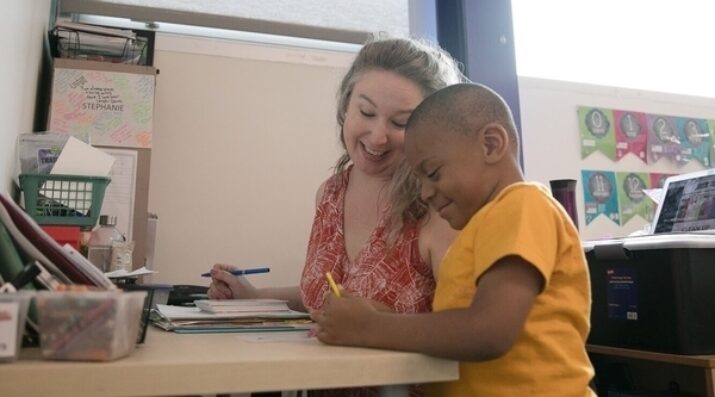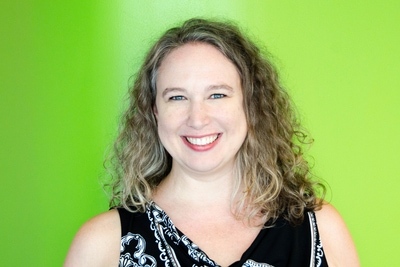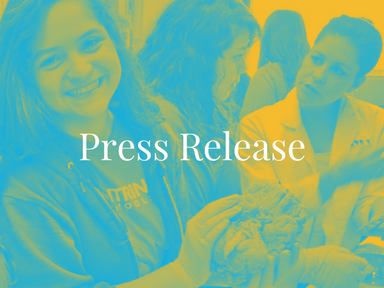Building Community
Live the Inclusion Dream: Two Pitfalls to Avoid in Co-Teaching
Topics

When educators design and create new schools, and live next gen learning themselves, they take the lead in growing next gen learning across the nation. Other educators don’t simply follow and adopt; next gen learning depends on personal and community agency—the will to own the change, fueled by the desire to learn from and with others. Networks and policy play important roles in enabling grassroots approaches to change.
Co-teaching in an inclusion classroom has its rewards for special educators and general ed teachers alike, but only if co-teachers avoid these two pitfalls.
Finally, the day had arrived for me to achieve inclusion nirvana. This past year, I had the pleasure of co-teaching 100 percent of the time with a general education teacher, assistant teacher, and para-professional. We co-planned, co-taught, and collaborated. We liked and respected each other! In many ways it was all I dreamed about. However, I hadn't anticipated two common pitfalls, so large and unsuspecting that they could have turned our co-teaching dream into a nightmare: controlling too much and its partner the fear of not doing enough.
Controlling Instruction
The first of these pitfalls was control. I respect my team enormously, so my desire to control instruction for the children of my caseload did not reflect my faith in their abilities. It was more a reflection of my sense of duty to the children and the gravity of their needs. So, let’s kindly label me a “Control Fan” instead of a “Control Freak.” I often thought of myself as running a class within a class and that is a dangerous thought path for a co-teacher. I knew in my head that these students were everyone’s responsibility and my colleagues felt the same, but in my heart and actions, my anxiety led me to act as if I had to be mostly, if not solely, responsible for their instruction.
What is the true best practice for co-teaching in an inclusion classroom? As their special educator, I am responsible for designing their specialized instruction. In no way should I be delivering all of their instruction. What a waste of such a strong and excellent team of teachers. The burden of responsibility for student achievement weighs heavily on most teachers: general educators, special educators, assistants, and paraprofessionals. In this case, I let that weight of responsibility morph into a need to personally deliver all instruction. Trusting my expertise, my team went along.
So what is the fix? An emphasis on shared, balanced responsibility and purposeful planning. Any role in a co-teaching situation could fall back onto exerting too much control without realizing that the balance of delivery among teachers actually increases the instructional outcomes for all students. Moving forward, my co-teacher and I are committing to being purposeful about our planning and utilizing high yield co-teaching strategies (parallel teaching, station teaching, and alternative teaching) with a balance of delivery. I can be the designer of specialized instruction without always being the one delivering it. My partner and I are both pretty good chefs. We can both write the recipe and serve the meal.
The "Two Teachers Can Do More" Trap
Another pitfall I encountered was the fear of not “doing enough” to help the team. Besides having taught in multiple special education environments throughout my career, I was also a general educator for many years and led my own classroom. This made my partner and I even more susceptible to the “two teacher trap.” As in, “oh, you have two teachers, you can divide the work and get so much more accomplished,” or “having two teachers in the classroom must be nice. You can get assessments done much more quickly.” Beware of this line of thinking, it is most certainly a trap like quicksand.
In a co-teaching classroom, it is all too easy to lean into the “do what must be done” mode of operating. Here are the questions we must honestly ask ourselves: 1) Would a teacher be expected to perform this task alone without another educator? and 2) What is the very good reason I am stepping outside my role (general or special educator) to assist with this task?
Yes there are times when we must step up for the good of our team and our students. But this year, I am going to be really honest with myself about why I am doing it. Am I answering that negative voice that I am not “doing enough” (sheer lunacy in most of the teaching world, let’s be honest), or is this truly something that requires a complete team effort regardless of role?
My co-teaching team did the requisite work at the beginning of the year on roles and responsibilities, but the four of us—general education teacher, special education teacher, assistant teacher, and para-professional—are all “do what needs to be done” kind of people (as I expect many teachers are). Is doing “what needs to be done” coming at the expense of other priorities? Are we forsaking the important for the urgent? We do not have two teachers in our classroom to share the workload. We have two teachers to leverage the specialties of both to improve the instructional outcomes for all our students.
Co-Teachers Are the Lucky Ones
Here is the great news, teachers have the opportunity to self-reflect and implement change every day and every year. The great news for me personally is that we have students for two years in our school, so not only do I get to have my students for another year, I get my team another year as well. I am lucky. My team has expertise, flexibility, and genuine regard for each other. We get to have a general educator, special educator, and assistant teacher as well as para-professionals in one classroom all day. These are often things we cannot control in education and I know the fortune that favors me.
Even if you don’t have this luxury, you can still be aware of how these pitfalls could exist and take advantage of good co-teaching practices within a single class period, project, or lesson. If you feel like your inner Control Fan is emerging, communicate with your team members so you can build trust through honesty and action planning. If you find yourself sinking into the Two Teacher Trap, be bravely honest with yourself and revisit the responsibilities of your individual role. Ask yourself if your team and students are benefitting from your expertise based on your to-do list. Through our honest willingness and determination, we can make our students the lucky ones.
Photo at top: Stephanie Cade working with a student at Two Rivers Public Charter School. (Courtesy of Stine Riis Designs)




